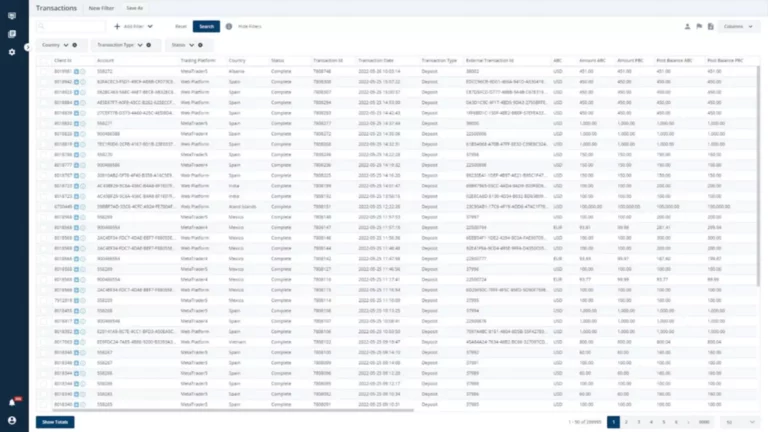Chưa có sản phẩm trong giỏ hàng.
FinTech
What is CaaS Containers as a Service? Secrets unlocked ..
Content
It supports custom domains and SSL certificates, making it easy to deploy web applications securely. Cloud Run also integrates with Google Cloud services such as Cloud Storage, Firestore, and Pub/Sub. Cloud providers also offer storage and security, so companies don’t have to worry about upkeep costs or going over storage capacity as they scale up. The operation of the containers and the use of one-click solutions (with the exception of autoscalers) do not incur any further costs. Via the IONOS cloud panel, users have access to various third-party applications as one-click solutions. CaaS also makes a great choice for companies that need to test and experiment with different crypto-as-a-service technologies that require access to computing resources.
Managed Container Services: KaaS, KPaaS & CaaS Explained and Compared

IONOS is the https://www.xcritical.com/ new price performance leader in cloud computing, as unveiled by Cloud Mercato in July 2024. A detailed description of the orchestration tools Swarm, Kubernetes, and DC/OS provides an overview of the most popular Docker tools. By now, you’re probably very excited about the potential benefits of Caas.

Container Orchestration Platforms
- This simplifies operations for developers who can deploy applications without worrying about underlying hardware or virtual machine management.
- Today, organizations are using containers as a service (CaaS) to meet their new IT demands.
- Instead, to get this kind of fully managed Kubernetes platform service (KPaaS), we have to turn to third parties, who are not beholden to any particular cloud provider.
- Indeed, companies with a container environment in their own data center have the greatest possible control over their information.
- The main drawback of KaaS is that only the control plane is managed, but not the worker nodes.
- Also, consider the multitude of cellphone plans that trumpet the fact that they don’t enforce long-term contracts as part of their service agreements.
- I see that as a blessing, because that means that the managed Kubernetes service will operationally feel the same way, regardless of which cloud provider(s) it happens to be deployed upon.
As such, the entire lifecycle of the app, right from development to deployment, can be automated under this platform. OpenShift’s framework allows users and teams to share the same clusters to manage Decentralized finance and deploy applications. It is worth noting that although clusters are shared across departments, they continue to operate independently in their isolated environments. The platform supports security features such as network segmentation and image signing and verification.
The best container as a service providers
A CaaS business has a very clear way of organization, much like a legitimate business. It includes engineers, leaders, and developers to construct the services/tools they are selling. It can even have tech support representatives to help buyers to understand all the technical details of the “product”.

ACI enables direct container execution without requiring an orchestrator, allowing it to support simple applications, task automation, and CI/CD workflows. This layer manages the lifecycle of containers within a CaaS environment. It automates the deployment, scaling, and networking of containers, ensuring they operate efficiently across different hosts. It also manages cluster state, schedules container deployments, and handles service discovery and load balancing among containers. CaaS is different from PaaS because it is a more basic service that simply provides one particular piece of infrastructure—a container. CaaS services may include development services and tools like CI/CD release management to be comparable to a PaaS model.
Container as a Service (CaaS) is a cloud service model that allows developers and IT teams to manage and deploy containers, applications, and clusters via container-based virtualization. It provides users with a framework to build, ship, and run containerized applications in a cloud environment, simplifying the deployment process. CaaS (short for Container-as-a-Service) is a business model whereby cloud computing service providers offer container-based virtualization as a scalable online service. This allows users to use container services without having the necessary infrastructure. It is a marketing term that refers to established cloud service models such as Infrastructure-as-a-Service (IaaS), Platform-as-a-Service (PaaS), and Software-as-a-Service (SaaS) as inspiration. Containers as a service (CaaS) is a cloud service model that allows users to manage, upload, scale, run, and terminate containers using a service provider’s API or web portal.
The core component of the CaaS service is the orchestration tools Kubernetes. To set up a dedicated container cluster, users select at least 3 virtual machines from the IONOS IaaS platform and use them as master or worker nodes if desired. Containers allow you to run applications in a virtual environment that has everything the application needs to run, but nothing else. This includes the operating system, libraries, and any other resources the application needs to run.
Regarding the top CaaS providers, Google Cloud Engine is regarded as one of the best solutions for deploying and running your apps. With this Container as a Service solution, you can reliably execute and scale your applications from a single computing environment. Like other cloud computing services, users can only select and pay for the CaaS resources they need. CaaS examples include load balancing, compute instances, scheduling options, and more options that depend on the company’s needs. CaaS lies between Platform as a Service (PaaS) and Infrastructure as a Service (IaaS) on the spectrum of cloud computing services. Instead of a virtual machine (VM) or bare metal hardware host system, which are often utilized to support IaaS environments, a container serves as the fundamental resource for CaaS.
In terms of software development tools & features, PaaS is more advanced. PaaS is more suitable for monolithic applications, while CaaS exceeds in microservice architecture. Unlike traditional virtualization, containers share the host’s operating system kernel and resources, resulting in lower overhead and improved resource utilization. This efficiency makes containers ideal for running multiple applications on a single host. CaaS providers often include built-in security features, such as vulnerability scanning, access control, and encryption, helping to protect containerized apps from potential threats. This guide will explore containerization’s key role in modern application development and deployment.
Since Kubernetes is an open-source container orchestration system, GKE can avail of basic Kubernetes features that help load balancing, auto-scaling, monitoring, etc. GKE seamlessly integrates with other GCP services, including Google Cloud Load Balancing, Google Cloud Storage, and Google Cloud Monitoring. CaaS is a subscription-based platform where users can buy CaaS resources to enable scheduling capabilities, load balancing, and compute instances within their operational framework. Typically, CaaS relies on a suite of technologies such as Docker, Kubernetes, and Data Center Operating System (DC/OS) to provide container orchestration.
Because of this, businesses now divide their data across different data centers to preserve redundancy and aid in quick recovery from major events. To keep up with changing market demands, the CaaS vendors regularly update the gear and software that deliver communication services. Therefore, the consumer should not be concerned about the services becoming obsolete.
Relying on container services can help teams quickly test, deploy and update containers without disrupting the entire IT infrastructure. Although the CaaS provider manages the container environment, customers should still follow best practices to ensure maximum security. For example, ECS customers should audit changes to their EC2 instances to make certain all modifications have been authorized. CaaS providers ensure that development and ops teams have the resources they need, when they need them, so they can focus on the development itself and on other initiatives. Like most types of managed services, CaaS is subject to the limitation that users get less control over how their applications are hosted and run. When you use a CaaS, you are restricted to the container hosting, deployment, and management options that your CaaS platform supports.
By utilizing CaaS, developers and IT operations teams don’t have to worry about the underlying infrastructure. The future of CaaS and containerization looks promising, with new features, tools, and integrations constantly emerging. As more industries recognize the value of these technologies, we can expect to see even greater adoption and innovation in the coming years. Then containers and KaaS came along, and the integration was essentially reduced to zero, because containers were fully independent packages of software. They just needed a smart enough system around them to deploy the containers.
It bridges the gap between development and operations teams by providing a shared platform for deploying, managing, and scaling applications. This collaboration fosters a more agile development environment, enabling quicker adjustments to market demands and technological advancements. With CaaS, companies can build and move without worrying about cloud infrastructure resources. As mentioned, cloud computing providers allow organizations to use their services wherever they are. This allows users to be up and running quickly and easily, regardless of whether they have the in-house resources to set this up themselves. CaaS is based on container technology, which is an approach to application deployment that uses containers to host applications.
Typically, containers share the operating system kernel with other containers, while VMs run on one entire virtual OS. Containerization allows teams to automate and speed up software development and deployment processes. With containerization, one can define infrastructure as a code (IaC) as a simple configuration file.
